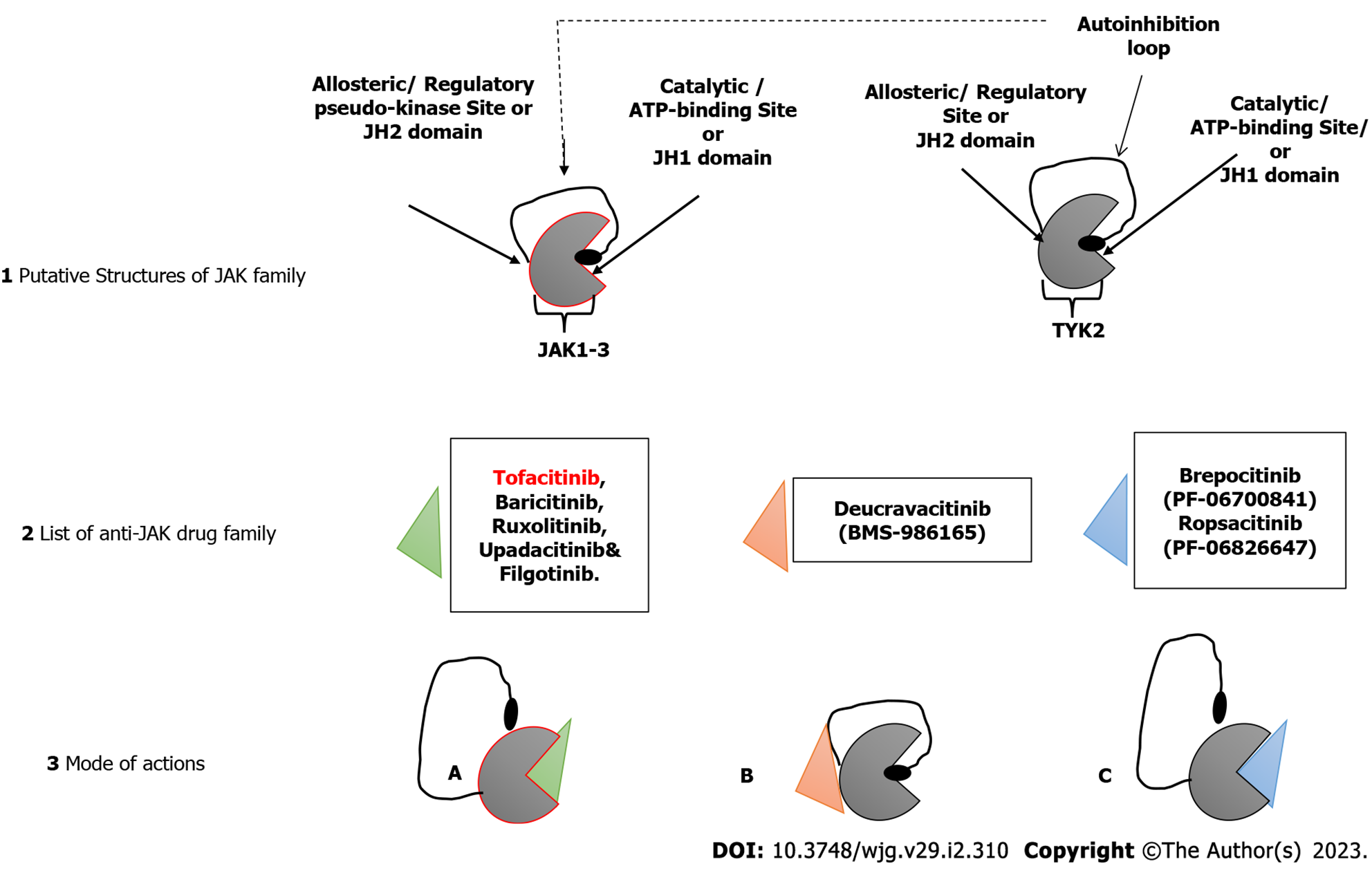Copyright
©The Author(s) 2023.
World J Gastroenterol. Jan 14, 2023; 29(2): 310-331
Published online Jan 14, 2023. doi: 10.3748/wjg.v29.i2.310
Published online Jan 14, 2023. doi: 10.3748/wjg.v29.i2.310
Figure 2 Putative representations.
1: Janus kinase (JAK) 1, 2 or 3, and tyrosine kinase 2 (TYK2) with their respective catalytic/ATP-binding/Janus homology (JH) 1 site, regulatory/allosteric/JH2 site and autoinhibition loop; 2: List of anti-JAK drug family differentiated with green, pink and blue shapes; 3: Different modes of action of the drugs differentiated with the colors of the shape: (A) Drugs in group A (e.g., tofacitinib, baricitinib, ruxolitinib, upadacitinib and filgotinib) block the ATP-binding site of either/both JAK 1 or 2, while the inhibition loop is disengaged; (B) Drugs in group B (e.g., deucravacitinib) bind to the allosteric site of TYK2, thereby stabilizing the autoinhibition loop from disengaging from the catalytic domain; (C) Drugs in group C (e.g., brepocitinib and ropsacitinib) are dual inhibitors and have a similar mode of action as “A” by binding to the catalytic site of their targets but blocking the catalytic site of both JAK 1 and TYK2 or JAK2 and TYK2, respectively. JAK: Janus kinase; TYK: Tyrosine kinase; JH: Janus homology.
- Citation: Johnson TO, Akinsanmi AO, Ejembi SA, Adeyemi OE, Oche JR, Johnson GI, Adegboyega AE. Modern drug discovery for inflammatory bowel disease: The role of computational methods. World J Gastroenterol 2023; 29(2): 310-331
- URL: https://www.wjgnet.com/1007-9327/full/v29/i2/310.htm
- DOI: https://dx.doi.org/10.3748/wjg.v29.i2.310









